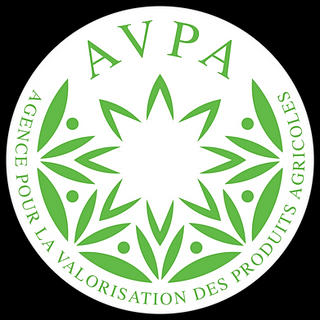Teas from Vietnam
- Philippe Juglar
- Jun 19, 2023
- 4 min read
Why Vietnam?
Called by several projects, I travelled to Vietnam for the first time in 2019. The main purpose of this trip was to participate as member of an international jury in the tea master cup (https://fr.teamasterscup.com/). I travelled around the different tea regions in the north of the country, met the producers and tasted many teas. This gave me a much better understanding of this country and its special and rich teas. I fell in love with it!
I’m pleased to invite you to discover its specificity and travel through 5 of these teas.
Vietnam
Located in Asia, between the 80 and 23.5 parallel, in the northern hemisphere, Vietnam enjoys a tropical, subtropical climate. This country is considered as one of the cradles of tea, alongside China, obviously, and other border countries located in the Golden Triangle such as Burma, Thailand and Laos. Tea has a strong history there and its crop yield is increasing today. Vietnam is home to ancient tea bushes in the mountainous northern region offering exceptional teas that are still little known.
What are the main tea-producing regions in Vietnam?

The production regions in Vietnam are divided as follows:
The Vietbac region includes the provinces of Hà Giang, Yên Bài, Tuyên Quang, Lào Cai, Bac Kan and Can Bang.
This region is split in two, with teas grown at high altitudes in the mountainous regions. These are mainly Shan Tuyet teas and other black teas. But also teas grown at lower altitudes with a more industrial production, including CTC (Crushing Curling Tearing) teas, mainly produced for the tea bags market.
Teas from mountainous regions should be valued, as these teas are rich and offer an interesting sensory character.
The variety of tea bushes, their age and the richness of the terroir offer high quality batches.
A focus on two provinces:
The province of Ha Giang.
Called the "roof of Vietnam”, this province is located at the northernmost tip of the country and is home to the two mountain ranges, Tay Con Linh and Hoang Lien Son forming a corridor. This province has the largest area of Snow Shan tea: 90% of the province's total production.
The province of Yen Bai.
Yen Bai is located just over 200 km from Hanoi. The Hoang Lien Son Mountain range continues in this province, offering interesting altitudes ranging from 900 to 1600 metres for some crops. Compared to other provinces such as Lao Cai or Lai Chau, Yen Bai benefits from more abundant rainfalls coming from the East. Teas from this area are often more structured.
The Northern Plateau region includes the provinces of Thài Nguyen, Phù Tho, Hoa Binh, Hà Tây, Hanoi and Vinh Phuc. This region is the main producer of black, green and jasmine teas.
The northwestern region includes the provinces of Son La, Lai Châu, Yen Bai and Diên Biên. With a colder climate due to the altitude, this mountainous region is well known for its century-old tea bushes. This region also produces Oolong teas from Taiwanese cultivars such as Jin Xuan and black teas.
The Northeast region includes the provinces of Quang Ninh, Lang Son and Bac Giang. This region has low production.
The central region includes the provinces of Thanh Hoa, Nghe An, Ha Ting. It produces mostly CTC (Crushing Curling Tearing) black teas and low-cost green teas for the tea bags market.
The Southern Plateaux region includes the provinces of Lao Dong, Gia Lia and Kom Tum. Initially centred around the production of black tea, this region has diversified by now offering dark and green teas as well as lotus, jasmine, and Oolong teas.
What types of teas does Vietnam produce?
For a long time Vietnam has produced exclusively export teas of mass consumption, also known as "mass produce tea". Sometimes it misused synthetic fertilizers to improve the tea yields. For a long time, it remained a low-valued producing country. Vietnam is now seeking to stand out with an improvement in growing conditions for more standard teas and with an offer of high quality teas reflecting the identity of the country. Labels such as “organic tea” one and “Rainforest Alliance”* are being developed, showing a clear desire to change crops methods.
Vietnam is a tea-producing country full of riches, offering great diversity and a genuine terroir type. Indeed, it offers a multitude of landscapes, varied altitudes, and varieties of tea plants. Additionally, Vietnam produces all the colours of tea as well as flavoured teas such as jasmine and lotus.
It is in this context that the promotion of Snow shan tea is developing.
What is Snow Shan Tea
“Snow shan tea” or snow mountain tea in English, is the translation of the Vietnamese name Trà (tea) Shan (mountain) Tuyêt (snow). It refers to ancient tea plants, left in their natural state or domesticated, growing at a high altitude in the mountains of northern Vietnam. The term snow refers to the silvery downy hairs that covers the buds of this variety of large-leaf tea plants. The Snow shan tea can be found in 8 provinces such as Son La, Dien Bien, Lai Chau, Yen Bai, Lao Cai, Ha Giang, Cao Bang and Lang Son. Some minorities take care of these -often centenarian- tea bushes and keep them unpruned. These people are also in charge of the harvest and nimbly climb trees to pick the most beautiful buds and young shoots.
Vietnamese teas can be perceived as special when you taste it for the first time. The bitter flavour surprises at first, but then, you quickly realize that it is part of the tea and fully participates in the profile and balance. If this flavour is not excessive, it supports the aromas and finds its balance in its sweet taste Both mingle and participate in the persistence of sensations. A tea ceremony, or ritual, has developed over centuries, without doubt inspired by the Chinese, but also with the Vietnamese identity. Each accessory, each gesture aims to create a suspended and sharing moment and the enhancement of tea is always at the heart of tasting.

In a following article, let me review the teas of Vietnam by exploring five teas.
Carine Baudry of La QuintEssence
*The Rainforest Alliance label is an international label created in 1987 for sustainable agriculture. This label applies only to food products, such as bananas, coffee, tea, chocolate and palm oil. The label guarantees good working conditions and a limited impact on the environment. It is also concerned about biodiversity. https://www.labelinfo.be/fr/label/rainforest-alliance










Comments